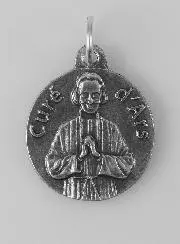Saint Roman of Antioch, also known as Roman the Melodist or Roman the Singer, is one of the most significant figures in early Christian history. Born in the late fourth or early fifth century, he is famous for his role in the development of Christian hymnography, as well as for his life of piety, devotion and inspiration. Although some parts of his biography are shrouded in a veil of legend, his influence on Christian liturgy remains undeniable.
Youth and Conversion
Romain was born in the town of Emesa (now Homs, in Syria), a region then at the heart of the Eastern Roman Empire. Born into a modest Christian family, he showed deep religious devotion and an interest in the spiritual life from an early age. Few details survive of his childhood, but it seems that he was influenced by the religious atmosphere of Emesis, where Christianity was flourishing.
Early on, Roman felt a call to serve the Church. He became a deacon in Beryte (today Beirut, Lebanon) and distinguished himself by his zeal in teaching the Christian faith and serving the poor. It was during this period that he developed his talent for composing hymns and liturgical poems.
Arrival in Antioch and Hymnographic Career
Around the beginning of the sixth century, Romain went to Antioch, a city then renowned for its spiritual and intellectual vitality. Antioch was an important crossroads of Eastern Christendom, where theological and liturgical debates enlivened ecclesiastical life.
It was at Antioch that Romain devoted his energies to perfecting the art of hymnography. He composed numerous kontakia, a type of poetic hymn characterised by a narrative structure and profound theological content. These compositions quickly became a central element of Eastern Christian liturgy.
Roman's talent for sacred poetry was so extraordinary that he was nicknamed the Melod (or the Singer). His works, of great theological and artistic richness, aimed to teach the Christian faith in an accessible way, touching both the intellect and the heart of the faithful. They dealt with a variety of subjects, including the great liturgical feasts such as Christmas, Easter and Pentecost.
The Legend of the Miracle of the Mother of God
One of the most famous episodes in the life of Saint Romain is linked to a miraculous vision he is said to have had of the Virgin Mary. According to tradition, Romain was a deacon at the Cathedral of Hagia Sophia in Constantinople when he came under fire for his singing skills. Humiliated, he withdrew into prayer and implored divine help.
On Christmas Eve, the Virgin Mary appeared to him in a dream and gave him a scroll to eat. This symbolic gesture is said to have given Romain a supernatural gift for composing and singing hymns. In the morning, he composed and sang his first kontakion, the famous "Today the Virgin gives birth to the Unapproachable", which remains one of the jewels of Byzantine hymnography.
Themes and Main Works
Romain is credited with composing several hundred hymns, although only some have survived. His works are distinguished by their theological depth, poetic style and ability to move. His favourite themes include:
The Nativity: His hymns on the birth of Christ highlight the mystery of the Incarnation and the universal joy of redemption.
The Passion and Resurrection: Romans explores the suffering of Christ, the hope of the resurrection and the victory over death.
The Virgin Mary: He shows a particular devotion to the Mother of God, whom he regards as a model of faith and humility.
The Saints: Roman also wrote hymns in honour of martyrs and the great figures of the Christian faith.
One of the major characteristics of his style is the use of dramatic dialogues, which make his hymns lively and accessible. These dialogues allow the faithful to identify with the biblical characters and immerse themselves in the sacred events.
Piety and Spiritual Influence
Saint Romain was known for his great humility and devotion to prayer. He lived an ascetic life, devoting his days to meditation, writing and service to the Church. His main aim was to lead the faithful to a deeper understanding of the Christian message and a richer spiritual experience.
His influence on Eastern Christian liturgy was immense. Romain's hymns transformed religious services, introducing a poetic and musical dimension that enhanced the participation and emotion of the faithful. His compositions quickly became a model for subsequent hymnographers and continue to be sung in Orthodox churches today.
Death and Canonisation
Saint Roman died around 560, probably in Constantinople, after a life devoted to the service of God and the spiritual enrichment of the Church. His memory was soon venerated, and he was canonised shortly after his death. His feast day is celebrated on October 1 in the Orthodox Church.
Legacy of Saint Roman
The legacy of Saint Roman of Antioch is indelible in the history of Christianity. His hymns continue to be a spiritual and liturgical treasure for the Eastern Churches. They serve as a reminder of the importance of sacred art as a means of expressing faith, transmitting theological teachings and bringing the faithful closer to God.
Saint Roman is also a model of perseverance and humility. Despite criticism and trials, he turned his challenges into an opportunity to serve the Church and inspire generations of believers. His life is a testimony to the power of faith, prayer and creativity in the service of God.




















